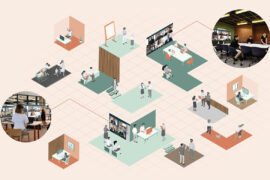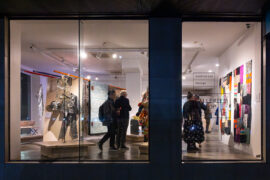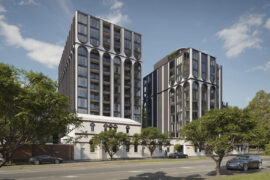How can a city adapt towards a more flexible way of living and working? Justin Zhuang reflects on his own work-from-home experience and shares his observations.

Image by Elf-Moondance from Pixabay
October 7th, 2021
When I first began working from home a decade ago, most of my friends were amazed it actually worked. Or that I actually did work. Fast forward to 2020, and it has become a reality for most. The pandemic has changed how traditional office are used and led many to turn their homes into workspaces. What was meant to be temporary is becoming a new normal as companies rethink their setup to support working from home.
As I watched the rest of the world discover this “new” mode of working, there was a sense of déjà vu. I first started working out of my parent’s apartment simply because I had no office to report to as a freelance writer. In contrast, both my parent did, and my sister was still schooling. Their absence meant the apartment was emptied in the day. I could work out of my bedroom, in the dining area or even in front of the television in the living room!
Having to spend the entire day at home, I quickly learnt the need to create an atmosphere of “work”. Most mornings began with me “traveling” out of the bedroom to have breakfast in the dining area, before returning to the same room that then became my “office”. I also worked the typical hours of nine to six like others. Such routines were essential as I did not have a physical office to separate work from life.
Another way of carving out the two was to simply work in another space. While many have the romantic notion of writing in a café or the luxury of co-working spaces, I preferred the public library where it was quieter, and more importantly, free. In my search for such “third places” to work, I realised how rigid the city was designed. Homes were for living. Offices for working. Malls and parks were spaces for play. Trying to carry out one in another was challenging and frowned upon. It is why working or studying in a café is largely tolerated rather than encouraged.
The years of working in spaces and places not designed for it trained me to see where opportunities may lie. Why should the dining table only be used for meals? When is the lull period in a café such that I can park myself for a few hours? Having a flexible mindset and being adaptable is key to creating an “office” wherever one may be.
But just as important is design. When I moved into my own apartment, I had it designed with separate zones and multifunctional furniture to support my wife and I working from home. As more families work, and even study, from home, it becomes essential to design spaces that can support these new functions while preserving the sense of an abode. After all, we call it “working from home” and not “working at home”. In cities such as Singapore where real estate is a premium the solution cannot be about moving into a bigger space but creating better ones.
The city also needs to be redesigned to support this shift. How might we carve up more “third spaces” that are free for public use in our neighbourhood? How might existing spaces become more flexible to support different uses throughout the day? Planning needs to move towards mixed-used developments, yet still keep a sense of separation that is essential to ensuring a liveable environment.
The skyline of officer towers has long dominated our imagination of what a city is, but the pandemic is forcing all of us to reconsider this view. Cities of tomorrow need to be reimagined, and what better place than to start working on it from home.
INDESIGN is on instagram
Follow @indesignlive
A searchable and comprehensive guide for specifying leading products and their suppliers
Keep up to date with the latest and greatest from our industry BFF's!

Merging two hotel identities in one landmark development, Hotel Indigo and Holiday Inn Little Collins capture the spirit of Melbourne through Buchan’s narrative-driven design – elevated by GROHE’s signature craftsmanship.

For a closer look behind the creative process, watch this video interview with Sebastian Nash, where he explores the making of King Living’s textile range – from fibre choices to design intent.

Neill Johanson, Principal at Davenport Campbell, comments on what we might be losing and gaining with the expansion of remote work.

‘The Mandate Mirage: 2025 Workplace Futures Survey’ is a new report by international design practice Hassell, revealing that the real drawcard for attracting employees to the office in-person is choice.
The internet never sleeps! Here's the stuff you might have missed

The Australian Design Centre (ADC) has announced that the organisation can no longer continue without adequate government funding to cover operational costs.

At Melbourne Design Week, Plus Studio brought together planners, designers and local government voices to unpack the realities of urban densification.